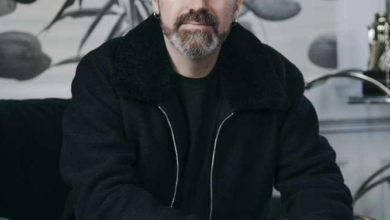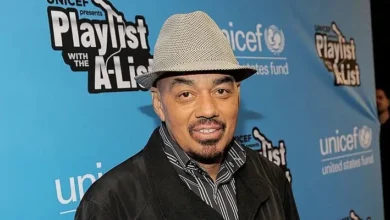No Way Back for Prince Harry: A Deep Dive into His Journey

The Rise of Prince Harry: From Royalty to Independence
Prince Harry, born Henry Charles Albert David, emerged from an illustrious lineage, being the younger son of Charles, Prince of Wales, and Diana, Princess of Wales. His early life was shaped by the expectations that accompanied royal status, living in the public eye from a tender age. no way back for prince harry The bond between him and his brother, Prince William, played a pivotal role in his upbringing, offering both companionship and rivalry as they navigated the complexities of royal life. With parents whose marriage was marred by public scrutiny and personal strife, Harry’s childhood was not without its challenges.
Education took him from the prestigious Eton College to the Royal Military Academy Sandhurst, where he displayed a keen sense of duty, ultimately serving as an officer in the British Army. His military service, particularly in Afghanistan, fostered a strong sense of independence and resilience. These experiences allowed him to relate to ordinary citizens, setting him apart from no way back for prince harry the typical royal narrative. His genuine commitment to service resonated with many and gave him a glimpse into life outside the royal confines, sparking the initial flickers of independence that would define his later journey.
Before Prince Harry’s decision to step back from royal duties, he was widely perceived as the “wild child” of the family, known for his charitable endeavors and occasionally rebellious behavior. Public sentiment evolved over time, recognizing him as more than just a prince but as someone struggling with the weight of expectation and the legacy of his mother, who championed humanitarian causes. These bonds and experiences undoubtedly contributed to the desire for a life away from royal responsibilities, hinting at the inevitability of a path where there was, indeed, no way back for Prince Harry.
Turning Points: The Decision to Step Back
The decision of Prince Harry and Meghan Markle to step back from royal duties in early 2020 marked a pivotal moment in modern monarchy, a phenomenon often encapsulated by the phrase “no way back for Prince Harry.” This choice was not made lightly but was the culmination of various challenges the couple faced within the royal framework.
One significant force impacting their decision was the relentless media scrutiny. Both figures have been subjected to intense press coverage since their relationship became public, often resulting in negative portrayals and invasive headlines. This scrutiny significantly affected their mental well-being, as they found themselves often defending their actions rather than enjoying their public roles. As they navigated this media landscape, it became increasingly clear that Harry’s past experiences with media attention, spurred by the tragic loss of his mother, Princess Diana, weighed heavily on him. The couple’s concerns regarding the safety of their family also fueled their resolve to step back.
Moreover, the societal expectations placed upon them were immense. As members of the royal family, they were expected to embody certain ideals and fulfill numerous royal duties. The pressure to comply with these long-standing traditions clashed with their desire no way back for prince harry to forge a more independent path focused on philanthropy and social causes closer to their hearts. Through various public engagements, Harry and Meghan expressed their frustrations related to the constraints they experienced within royal protocols, which contributed to their ultimate decision to distance themselves from formal royal responsibilities.

In light of these challenges, the decision to step back became a defining moment for Prince Harry, symbolizing a significant shift not only in his life but also in the perception of the royal family. It presents a complex narrative where personal struggles intertwine with public expectations, illustrating the profound implications of their departure, embodying the theme of “no way back for Prince Harry.”
Life After Royalty: New Beginnings and Challenges
Prince Harry’s departure from royal duties marked a significant shift in his life, ushering in a new phase characterized by both opportunities and obstacles. After stepping back from his royal responsibilities, Prince Harry dedicated himself to various philanthropic endeavors, significantly through the establishment of the Archewell Foundation. This foundation aims to promote mental health awareness, gender equality, and community support, reflecting Harry’s commitment to making a positive impact in the world.
In addition to his philanthropic work, Prince Harry has ventured into the media sphere. He has collaborated with various organizations and produced content that resonates with his mission of promoting compassion and mental well-being. His projects no way back for prince harry often emphasize the importance of openness regarding mental health struggles, a cause that is particularly close to his heart. However, this shift to a more public-facing role comes with its own set of challenges, including scrutiny from the media and public opinion. The transition into this new spotlight has not been without controversy, as Harry navigates the complexities of celebrity status while advocating for causes he believes in.
Moreover, the relationship dynamics with his family, particularly with the royal family, have evolved significantly. The distance from royal life has led to speculation about whether there is any chance for reconciliation. Public perceptions of Harry have shifted, with some expressing support for his decisions while others criticize his choices. These dynamics further complicate his journey, highlighting the reality that there is, indeed, no way back for Prince Harry to his prior life, as every step forward is accompanied by personal and familial repercussions.
As he forges ahead, navigating the challenges of his new life and responsibilities, Prince Harry embodies a relentless pursuit of purpose in a world that has dramatically changed around him.
No Way Back for Prince Harry: Analyzing the Future
The journey of Prince Harry has undergone a significant transformation in recent years, leading many to assert that there is no way back for him. With his departure from royal duties and his subsequent relocation to the United States, he has unequivocally no way back for prince harry altered both his personal and public life. This shift has been driven by a commitment to the ideals and values no way back for prince harry that he and his wife, Meghan Markle, have embraced, including a focus on mental health advocacy, philanthropy, and social justice. These choices mark a clear divergence from the lifestyle and expectations associated with royal protocol.

Prince Harry’s decision to step away from the royal family symbolizes a definitive break from tradition. This new path opens doors to explore various ventures that resonate with his vision of a more equitable world. His work with organizations such as the Archewell Foundation demonstrates his dedication to making a meaningful impact, both on an individual level no way back for prince harry and within broader societal contexts. As Harry engages with these initiatives, it becomes evident that he is not merely seeking to distance himself from the monarchy but rather to redefine his legacy in a way that aligns with his newfound beliefs.
The implications of Harry’s choices extend beyond his own life; they set a precedent for future generations. By prioritizing authenticity over royal expectations, he challenges traditional narratives about duty and obligation. This shift may embolden younger royals and public figures to pursue their own passions without the fear of sacrificing their heritage. Furthermore, Harry’s evolving relationship with the monarchy, impacted by his commitment to new ideals, raises questions about the future of royal engagement with contemporary societal issues. As a result, the concept of there being no way back for Prince Harry transcends his individual journey, influencing the trajectory of the monarchy and the expectations surrounding it for years to come.




